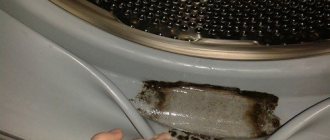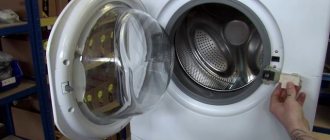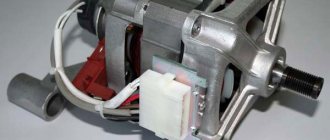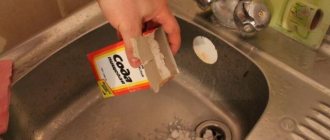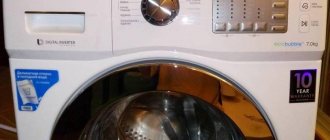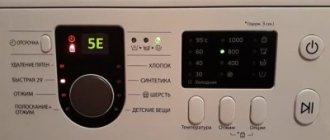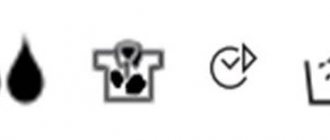How to clean the rubber band in an automatic washing machine from dirt. SMAs effectively replace manual labor and make the life of housewives easier. To ensure that the equipment does not fail, it requires proper care.
Periodic cleaning of various elements is a reliable prevention of breakdowns. The sealing cuff is no exception. In order not to one day find stains or smell mold, the rubber seal must be properly cleaned.
- Causes of unpleasant odors, scale formation, and mold
- Where to start cleaning the sealing rubber?
- Mold removal procedure
- Ways to eliminate odor and scale
- Treatment of the MCA cuff
- Cleaning compounds
- Preventive actions
- Catalog of washing machines with reviews
Causes of unpleasant odors, scale formation, and mold
When bacteria and fungus spread inside the equipment, a plaque is created and an unpleasant odor appears. Ideal conditions for the life of microorganisms are heat, dirt residues, high humidity and lime deposits.
If you always wash things at low temperatures, and also use the quick wash mode, disinfection does not occur, microorganisms do not die, but favorable conditions are created for their reproduction. To prevent this from happening, after each cycle you should thoroughly wipe the cuff and the inner surface of the drum.
Washing machine cuff with mold
Don't skimp on bleach. If processing of things occurs in its constant absence, then this also negatively affects the condition of the gum. It is a bad habit to store dirty things in the drum or keep the door closed all the time.
Expert opinion
I work in the household appliance repair industry. Extensive experience in restoring washing machines and dishwashers.
Ask a Question
Many rinses create plaque, which is a favorable environment for the life of various fungi and bacteria.
The main causes of plaque:
- operation at temperatures not exceeding 60 OC;
- excess rinses or gels;
- unsatisfactory powder quality;
- lack of regular care;
- high humidity;
- storing used laundry in a drum.
The reason for the formation of lime deposits is poor water quality, its hardness and excessive content of mineral salts.
When you need specialist help
You can fight mold in an automatic machine by using specialized products Kaneyo, Nagara, HG, Wpro, Dr. Beckman, etc. Nowadays, you can buy any solution or spray to get rid of mold. It should be used in accordance with the instructions.
If you have tried different means, but have not been able to eliminate mold from your unit yourself, we recommend calling a specialist. The technician will disassemble the machine, inspect and thoroughly clean all its components.
Items must be taken out immediately after washing.
Where to start cleaning the sealing rubber?
First of all, you should identify places where dirt collects and fungus has spread. The equipment is disconnected from the electricity, the door is opened and the rubber is carefully inspected, carefully turning away the folds around the entire circumference.
Particular attention must be paid to the lower part. It is best to do this immediately after the end of the next cycle, before the moisture evaporates.
Cuff
The outer part of the elastic is wiped with a damp cloth, then the folds are turned away and the indentations are processed. To work you will need:
- viscose napkin,
- foam sponge,
- rubber gloves to protect hands,
- cleaning gels or powders.
Do not use abrasives or chemical solvents to avoid damaging the seal material.
Use of household chemicals
Manufacturers are constantly expanding their line of products aimed at combating mold in the rubber bands of washing machines, but housewives assure that Domestos copes with the problem perfectly. Apply the solution to the surface of the gum, then wipe it well with a sponge. If you cannot wash all the folds, remove the cuff.
“Whiteness” can also wash the gum if you follow our instructions:
- Remove as much dirt as possible with a damp cloth.
- Dampen the sponge with the product and wipe the inside of the cuff.
- Wipe the washing machine drum.
- Close the door, wait half an hour.
- Turn on the washer in rinse mode.
It is possible that in advanced cases you will have to repeat the procedure, but more often “Belizna” copes with mold on an elastic band in one go.
Mold removal procedure
The device is cleaned in several stages:
- wipe the surface with a damp cloth and remove plaque;
- turn away the edges and process the folds where dirt usually collects;
- put on gloves and soak a napkin in a chlorine-containing solution;
- clean the drum, as well as the inner and outer parts of the rubber;
- close the door and leave for 40 minutes;
- start the rinse mode and completely clean the device of chemicals.
Do you turn off the water tap after washing?
Oh yes! No.
Another effective way to save a car is to treat it with copper sulfate:
- A tablespoon of blue crystals is dissolved in one liter of water and the problem areas are carefully treated with the resulting liquid.
- The unit is left in this form for a day.
- To clean, turn on the quick wash mode at any temperature.
If there is too much mold, then the measures may not be effective enough. In this case, you will have to change the cuff. Please note that this is not easy to do on some washing machine models. The main reason is the non-separable case, or non-removable front panel.
Attaching the clamp to the cuff
Important points when cleaning the rubber seal
Next, we’ll figure out how to clean the dirt under the rubber band of a washing machine.
Before starting cleaning work, you must turn off the power to the washing machine to protect yourself from possible electric shock.
It would be a good idea to put on rubber gloves and get a few small rags that will be convenient for cleaning hard-to-reach surfaces. Never add solvents to the water you are going to use to wash contaminated areas - they can worsen the condition of the machine even more.
You should start cleaning the elastic immediately after the last wash - this will help you quickly identify problems. Before you begin, you need to inspect the detergent and conditioner compartments, drain hose and filter.
This is worth doing because there is a possibility that even after successfully removing the mold from the O-ring, the remaining harmful bacteria will return to the original location. If the result of the examination triples you, then you can proceed directly to processing the gum.
Experienced professionals advise disinfecting mold in several steps. First you need to apply detergent to a wet cloth and wipe the outside, and most importantly, the inside of the ring, getting rid of visible mold.
Next, you should carry out a cleansing wash in the rinse mode, without loading clothes into the drum, and then wipe it dry to prevent the possible spread of bacteria.
Ways to eliminate odor and scale
The easiest way to get rid of them is using available home methods. The following solutions are suitable for this:
- citric acid,
- chlorine bleach,
- soda or vinegar.
The surface is wiped from moisture and treated with a cloth soaked in a solution of medium concentration. The darkened areas are carefully cleaned with soda, after which the unit is started with an empty drum at 60 OC.
Do you store laundry in the washing machine?
Oh yes! No.
Special store-bought formulations or citric acid will help get rid of scale. It is added to the container in an amount of 100 grams and a long-term mode is started, setting the temperature to at least 60 OC.
Another way is to add 60-70 ml of table vinegar to the rinse aid compartment, and then run the mode at elevated temperature. After 20 minutes, stop the device and wait about an hour, then continue operating the equipment.
Acidic products should not be used more often than once every 6 months, so as not to harm the rubber.
To quickly eliminate an unpleasant odor, wipe the cuff with a foam sponge moistened with any dishwashing gel. Fix the result with a single wash at 60 OC, adding a dishwasher tablet to the tray.
Checking the cuff
What threat does
As you know, mold is a fungus that appears on damp objects. It tends to spread quite quickly over any surface. We often underestimate the danger that mold poses. However, it is worth noting that mold (its particles) can enter the mucous membrane of the respiratory tract (nose, throat), lungs and bronchi, which causes an allergic reaction, and in some cases asthma. Imagine what will happen if it gets on things.
Now it’s worth considering the most effective methods of combating mold, which will not require large expenses. You can fix the problem without the help of cleaning services.
Treatment of the MCA cuff
If the contamination is too strong, it is better to remove the seal and treat it separately. This is done as follows:
- use a narrow screwdriver to pry up the wire clamp that holds the rubber;
- pass the tool in a circle and remove it;
- carefully remove the seal, avoiding contact with the electronic door lock;
- thoroughly wash the part in water, adding a small amount of bleach to it, for this use a container of sufficient volume;
- rinse under the tap and wipe with a dry cloth.
If defects are discovered on the cuff during care, it will have to be replaced.
Is a dishwasher profitable?
Oh yes! No
Clean the car under the rubber
The following solutions will help effectively remove contaminants in hard-to-reach areas of the seal and under the cuff:
- Copper sulfate is diluted at the rate of 50 g per 2 liters of softened water.
- The sealing ring is filled or sprayed with the resulting liquid.
- Lasts for 6–12 hours.
- Rinse and wipe dry.
After taking copper sulfate, mold will not return soon.
For complete cleaning, it is important to know how to clean the filter in a washing machine.
Cleaning compounds
There are several groups of complex products that effectively solve the problem of cleaning and preventing the formation of odor or plaque. When choosing, it is important to look at the labeling. These may be the following options:
- special pressed tablets for dishwashers;
- cleaner for washing machines;
- means for removing limescale.
Removed front panel of the washing machine
Among store-bought products that prevent the formation of deposits, “Antinakipin” is also suitable. The recommendations on the packaging should be strictly followed.
The fungus is removed using traditional methods using copper sulfate, soda ash or baking soda. The development of microorganisms is prevented by chlorine-based compounds:
- "Domestos";
- "White";
- Bagi;
- "Sepotosan-T".
The Dutch HG, the Swedish Mogel-Fri and the Well Done Mold cleaner spray have proven themselves well. Comet or “Toilet Duck” is also suitable, the main thing is not to use abrasives and solvents.
Top 5 chemicals for cleaning rubber parts
Dr. Beckmann
If there is not a lot of black mold accumulated, then you can get rid of it with the help of gentle substances that will not only cope with the problem, but also will not cause any harm to the washing machine.
Such means include:
- Popular detergents such as "Finish" and "Fairy";
- Special products for combating fungi and mold for household appliances;
- Dishwasher cleaners;
- Copper sulfate solution;
Each product on the list can completely disinfect the gum, saving it from new problems for a long time. The products will also help if the rubber band is blackened by mold.
From mold and mildew
Mold is resistant to various influences on it. A one-time treatment, even with the most lethal means, may not produce results. In addition, it returns as soon as a favorable environment is created again - humidity, warmth, darkness. Mold can settle in the powder compartment, tank, sealing rubber, hoses.
Mold control program:
- Clean the machine manually from mold deposits.
- Clean with acid.
- Treat with high temperature water.
- Dry the unit with dry heat or under an ultraviolet lamp.
Popular cleaning scheme:
- Pour a liter of liquid bleach into the dispenser and start the intensive mode.
- When the temperature reaches the maximum, pause the mode.
- Start the machine after 2 hours until the full cycle is complete.
- Pour 500 ml of table vinegar through the dispenser and start the rinse mode.
Rust is dangerous not only for the rubber seal, but also for laundry - during washing, rust can leave marks on the fabric. Rust stains appear from metal objects left in pockets - coins, paper clips, bolts, etc. Be sure to check all pockets in your clothing.
A solution of citric acid and salt will cope with this task. Mix one teaspoon of salt and lemon in a glass of water. Treat the stain with this solution several times.
Scale is clearly visible on the rubber gasket and the back wall of the drum. Store-bought products do a good job of this task. Among the environmentally friendly means, the usual soda and citric acid can cope with this problem. If there is a small amount of scale, you can clean it off manually.
The cause of the unpleasant odor lies in improper care of household appliances. Most often this is a closed car door. Water remaining in the sealing gum and small debris that is not removed immediately after washing begins to emit an odor. You should not leave washed laundry inside for a long time or put dry dirty laundry in a basket. Antibacterial products from the store will help get rid of the smell.
Traditional recipes are also suitable for this. Baking soda has long been a proven odor absorber. Pour half a glass of soda into the detergent container. Set to a long cycle with high temperature. Stop the machine in the middle of the cycle and leave it with the soda solution for several hours or overnight. After a long soak, turn on the machine and finish the dry wash.
From dirt and stains
Some soapy water with an unpleasant odor remains under the rubber band and in the drum. Gradually, dirt accumulates under the seal and stains appear. To clean the rubber band in an automatic washing machine from dirt, after each wash you need to wipe the rubber band and the surface of the drum with a damp cloth with a small amount of cleaning agent with chlorine, bend the edge of the cuff, and wipe all hard-to-reach places.
In addition to regular care of the outside of the washing machine, it also requires cleaning inside. Carrying out every 4-6 months, it will ensure longer and better operation of the washing machine. To clean the unit well, you will have to work hard, since the most stubborn dirt, as usual, accumulates in the most inaccessible places. You can use special cleaning products to clean your washing machine, but using home methods will give you just as good results.
The procedure includes cleaning:
- drum;
- rubber cuff;
- observation window;
- powder supply compartment;
- filters;
- internal parts to prevent the formation of scale, mold and unpleasant odors.
To remove scale resulting from the use of hard water, every 3-6 months. You should clean your washing machine using:
- table vinegar;
- food grade citric acid;
- special product “Antinakpin”.
A mixture of familiar home remedies - vinegar and citric acid - 1 liter per 400 g will help you quickly and efficiently clean the working parts of the washing machine. This mixture must be poured into the powder compartment and into the drum, and then turn on the machine without laundry, selecting a long washing program and setting t° 60° C.
The video below demonstrates in detail how to clean the filter yourself. The procedure is not complicated; all that is required is a towel and a low tray where you can drain the remaining water from the machine.
You can manually remove dirt from the drum by mixing 2:1 washing powder and chlorine bleach. Treat the surface of the drum with this mixture, close the door and turn on the machine, selecting a long wash cycle and high temperature.
We suggest you familiarize yourself with which products can and cannot be washed in a washing machine
The videos below demonstrate how to automatically clean the drum without using any products and clean the drum with baking soda.
To clean the pump in the washing machine, you need to unplug it from the outlet and close the shut-off valve. Then, using the instructions for the washing machine, clarify where this part is located. Depending on the model of the washing machine, in order to get to the pump, you will need to remove the bottom, front or rear panel of the case. Having reached the place where the pump is located, you need to remove the hose, disconnect all the wires and unscrew the pump itself. Then remove the impeller from the pump by unscrewing the screws. Remove any debris, hair, wool, threads from it. Wipe it and the pump itself from the inside. Then screw the impeller to the pump and install it in place, attach the wires and hose. Check the quality of the drain and the absence of extraneous noise by running the washing machine in normal washing mode. A clogged drain hose can cause water to go up the drain instead of going down the drain. To avoid this, it is necessary to clean it occasionally. To do this, unplug the washing machine and close the shut-off valve, then remove the drain hose. Depending on the type of washing machine, this will require removing the bottom, back, side or front wall of the case. After removing the corresponding panel, loosen the clamps and remove the hose. After this, the hose must be cleaned on both sides using a Kevlar cable. Rinse the hose under high pressure water and fasten it back, replace the removed wall.
After assembling the washing machine, carry out additional cleaning of the parts by pouring citric acid or Anti-scale into the powder tray, and then turning it on in idle mode at maximum temperature.
To clean a partially clogged hose, you can use a simpler method that does not require disassembling the washing machine. To do this, you will need a cleaning agent corresponding to the car brand and 150 g of soda. Pour them into the drum and turn on the washing machine, selecting the light wash program. If the blockage is severe, the same procedure may need to be repeated.
A clogged inlet filter located on the back of the washing machine - in the hole where the water supply hose is screwed on - leads to the fact that the washing machine begins to slowly draw water and spend more time washing. To clean it, you need to unplug the device from the outlet and turn its back side towards you, then perform a series of simple steps.
- Close the shut-off valve responsible for supplying cold water to the machine.
- Disconnect the inlet hose by unscrewing it from the washing machine body and drain the water remaining inside the hose. If it cannot be unscrewed by hand, you can use pliers for this purpose.
- Grab the edges of the filter with pliers and pull it towards you, pulling it out of the hole.
- Rinse the filter mesh with water. If it is very clogged, it can be left for 30 minutes. soak in warm, but not hot, acidified water, and then brush with a toothbrush.
- Use pliers to return the clean filter to its place by inserting it into the hole in the inlet hose.
- After screwing the inlet hose into place, open the shut-off valve to check that there are no leaks at the connection point of the hose to the body of the machine.
- To make sure that the washing machine fills water normally again, you need to plug it into the outlet and start any washing program.
Using vinegar when cleaning eliminates the washing machine:
- from scale;
- from mold;
- from the musty smell.
To clean the machine parts, you need to pour a glass of 9% vinegar into the powder tray and turn it on, having previously selected the maximum temperature and full wash mode. After 15-20 minutes. After starting work, stop the machine by pressing pause. After waiting for about an hour, start the washing process again.
When the cycle is complete, you should check the drain filter for debris and clean it. Then, moisten a rag in the vinegar solution and thoroughly wipe the rubber cuff and drum. The next stage is washing the machine parts; this is done by turning on a short washing cycle. After it is completed, all that remains is to wipe the drum dry and leave the machine with the door open so that the smell of vinegar disappears.
Preventive actions
To prevent deposits or odor from reappearing, you must adhere to the following recommendations:
- After operating the unit, remove moisture by wiping the drum and seal with a clean cloth;
- do not often use low-temperature modes;
- keep the door ajar between jobs;
- provide good forced ventilation in the room;
- do not leave washed clothes in the tank for a long time;
- do not use gels that cover the internal surfaces and create an environment favorable for the development of microorganisms;
- Once every 3-4 weeks, run an idle high-temperature cycle for the maximum time using high-quality powder and bleach.
Careful care of your washing machine will not only help prevent breakdowns and avoid costly repairs, but also maintain your health. But first of all, you need to clean the car from dirt inside under the rubber and outside.
Video
Why do you need to clean tires?
After the next wash cycle, cloudy stains appear on the laundry. Drum cleaning is not effective. The surest way is to mechanically remove dirt from the rubber on the door rim.
If contamination is not removed:
- Deposits will destroy the rubber, which will require replacement of parts.
- The spread of germs throughout the drum of the automatic machine causes contamination of the laundry and air.
- Black mold spores are dangerous to human health. The presence of micelles in a room causes allergies, asthma, and immune disorders.

